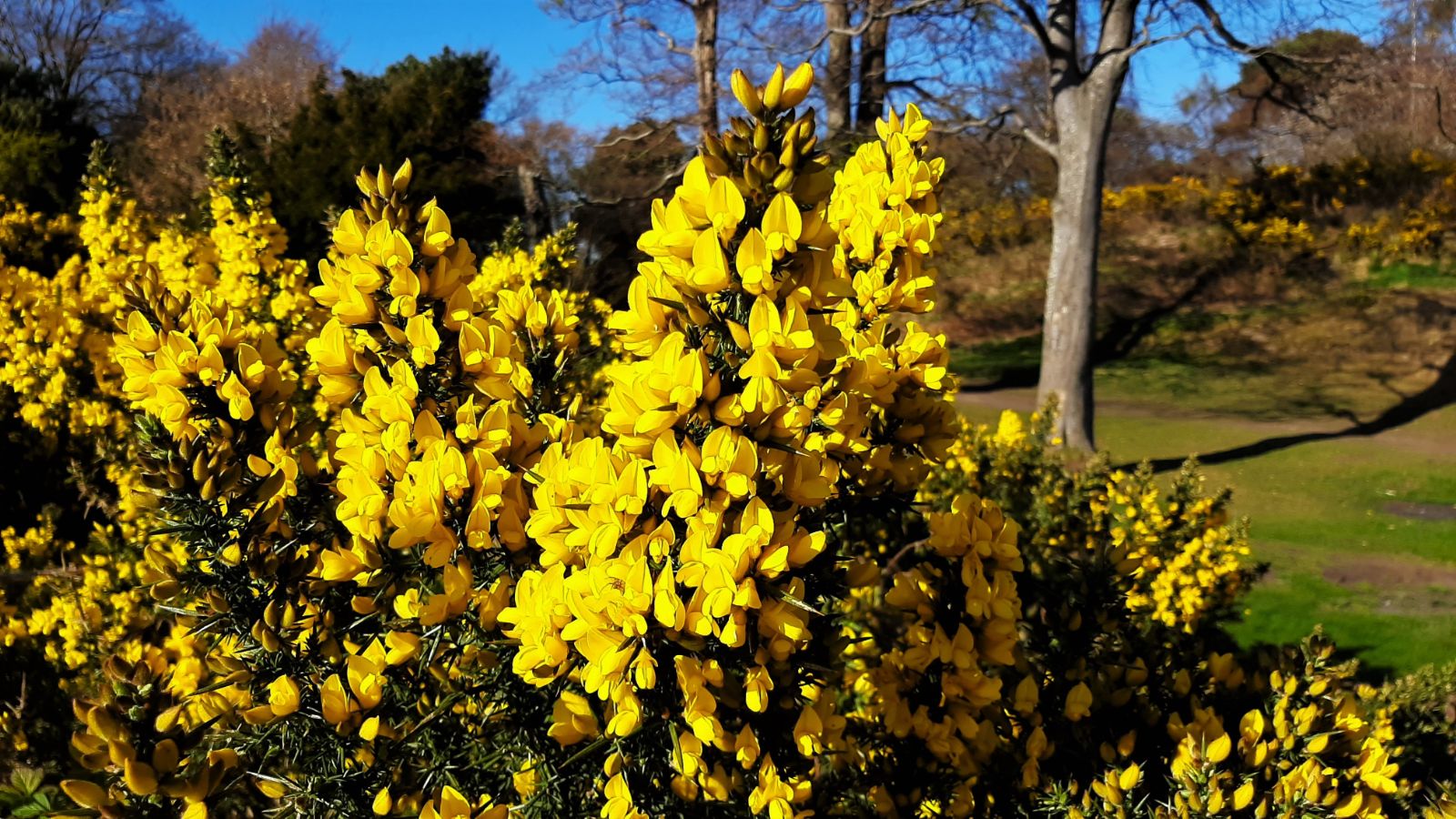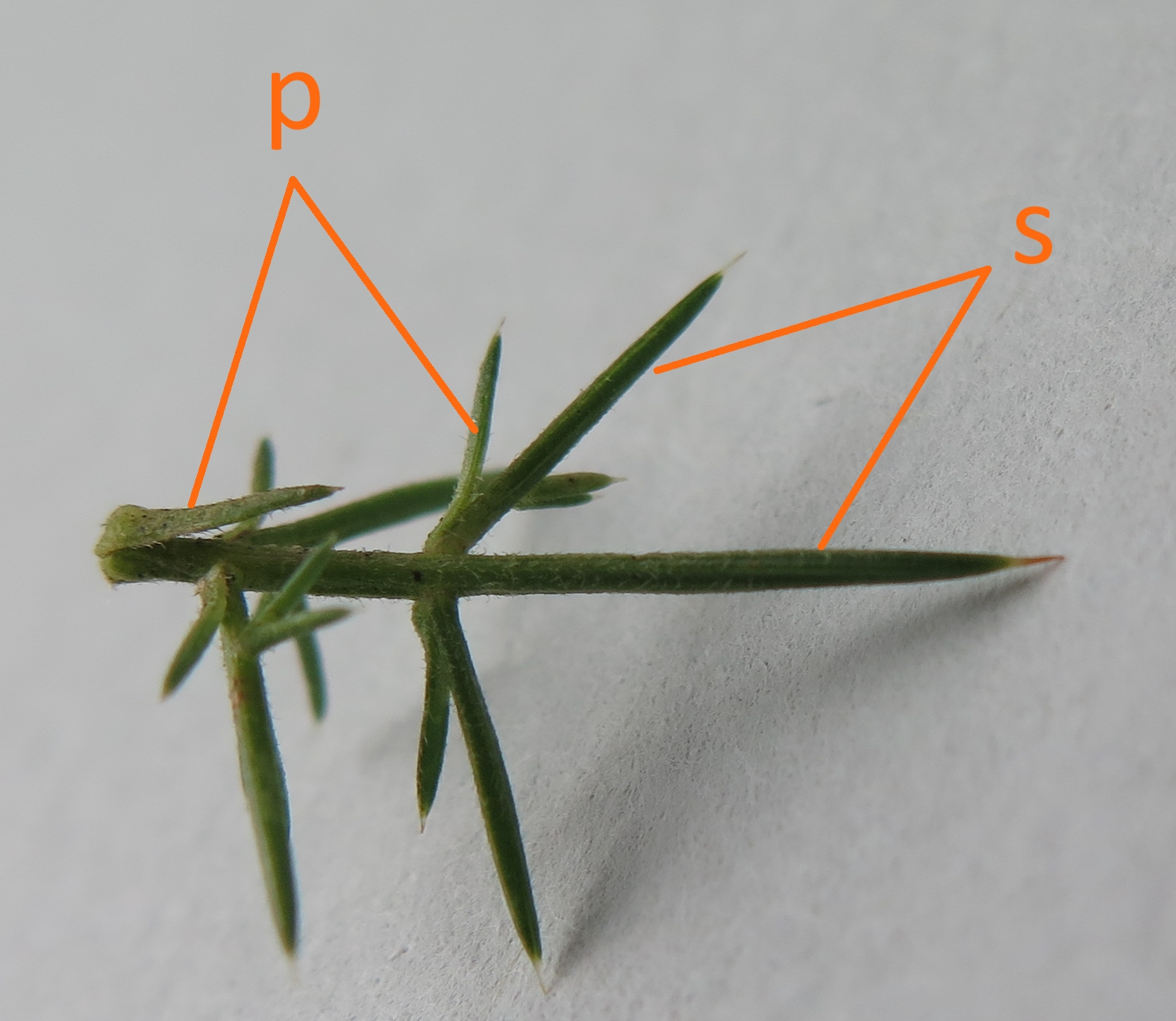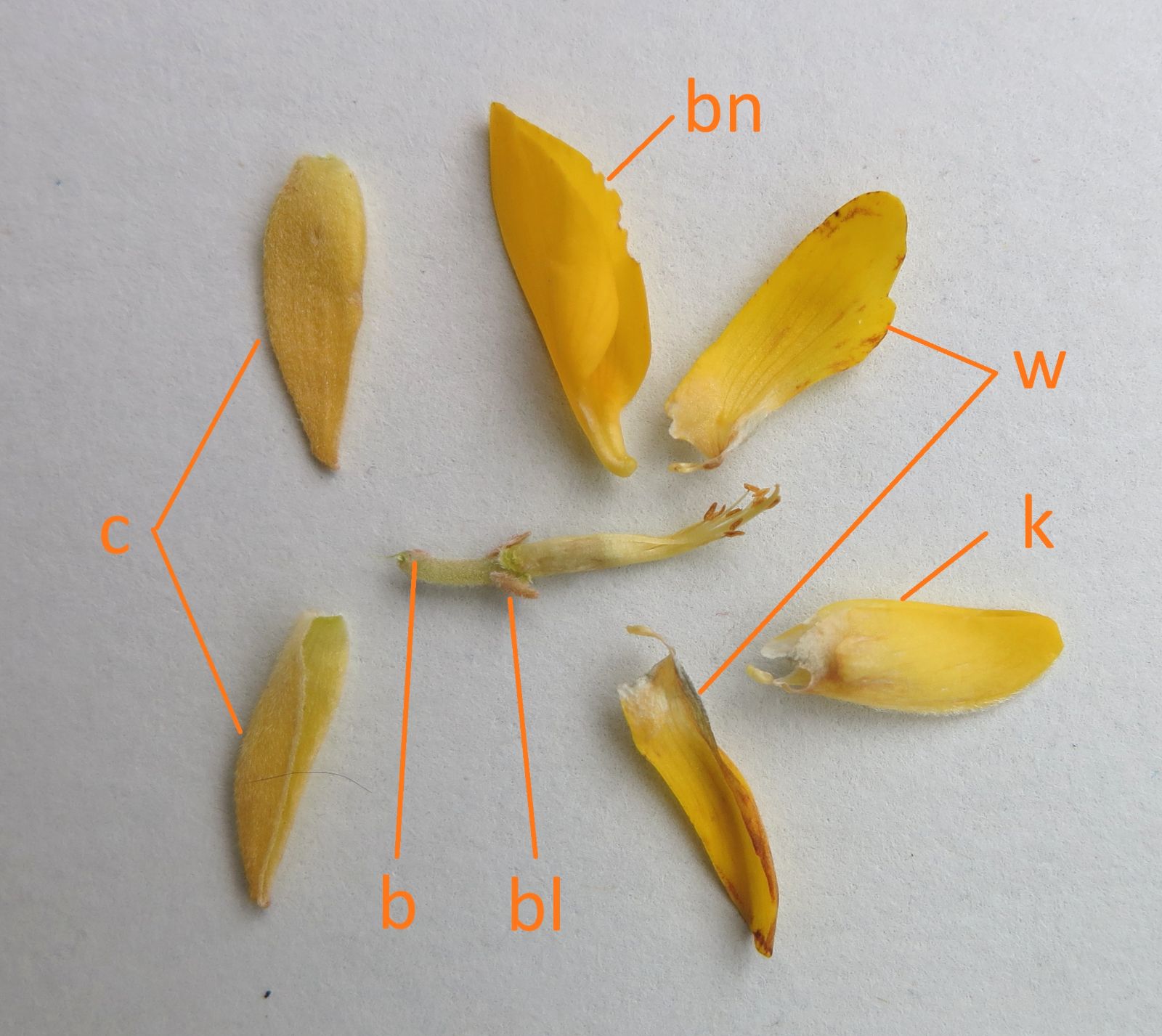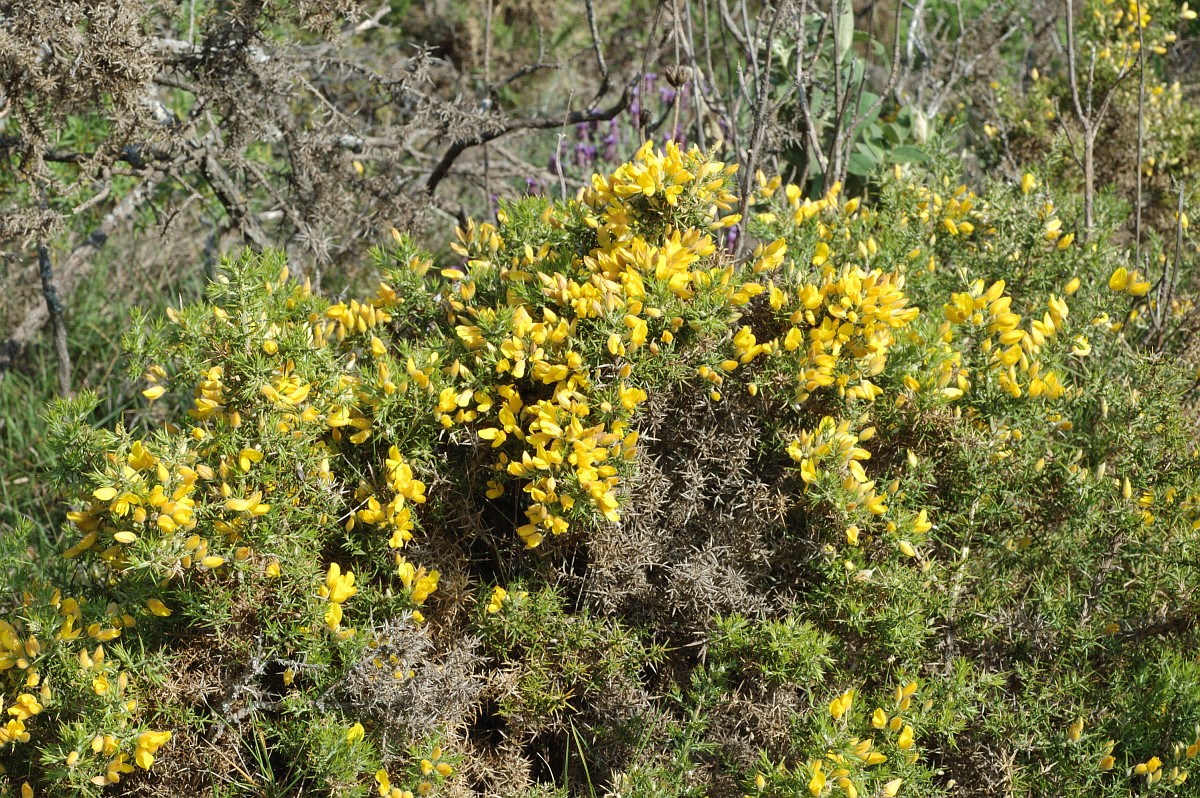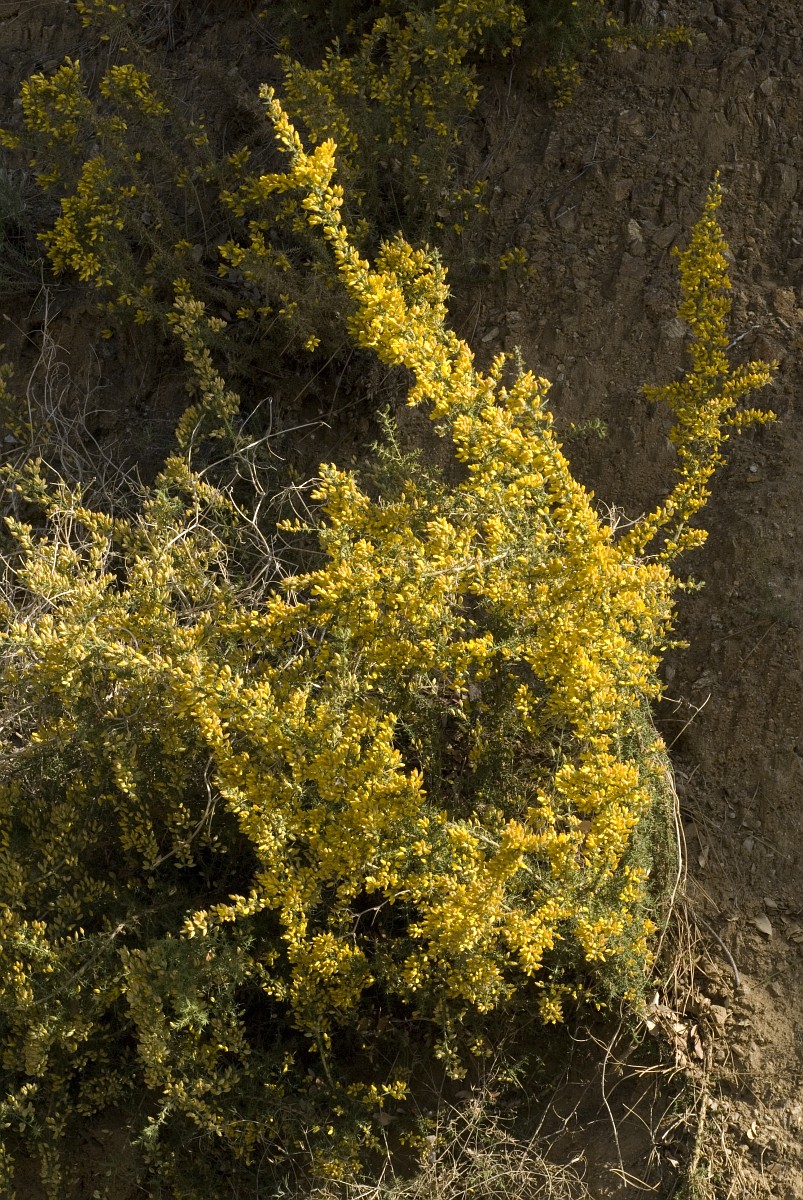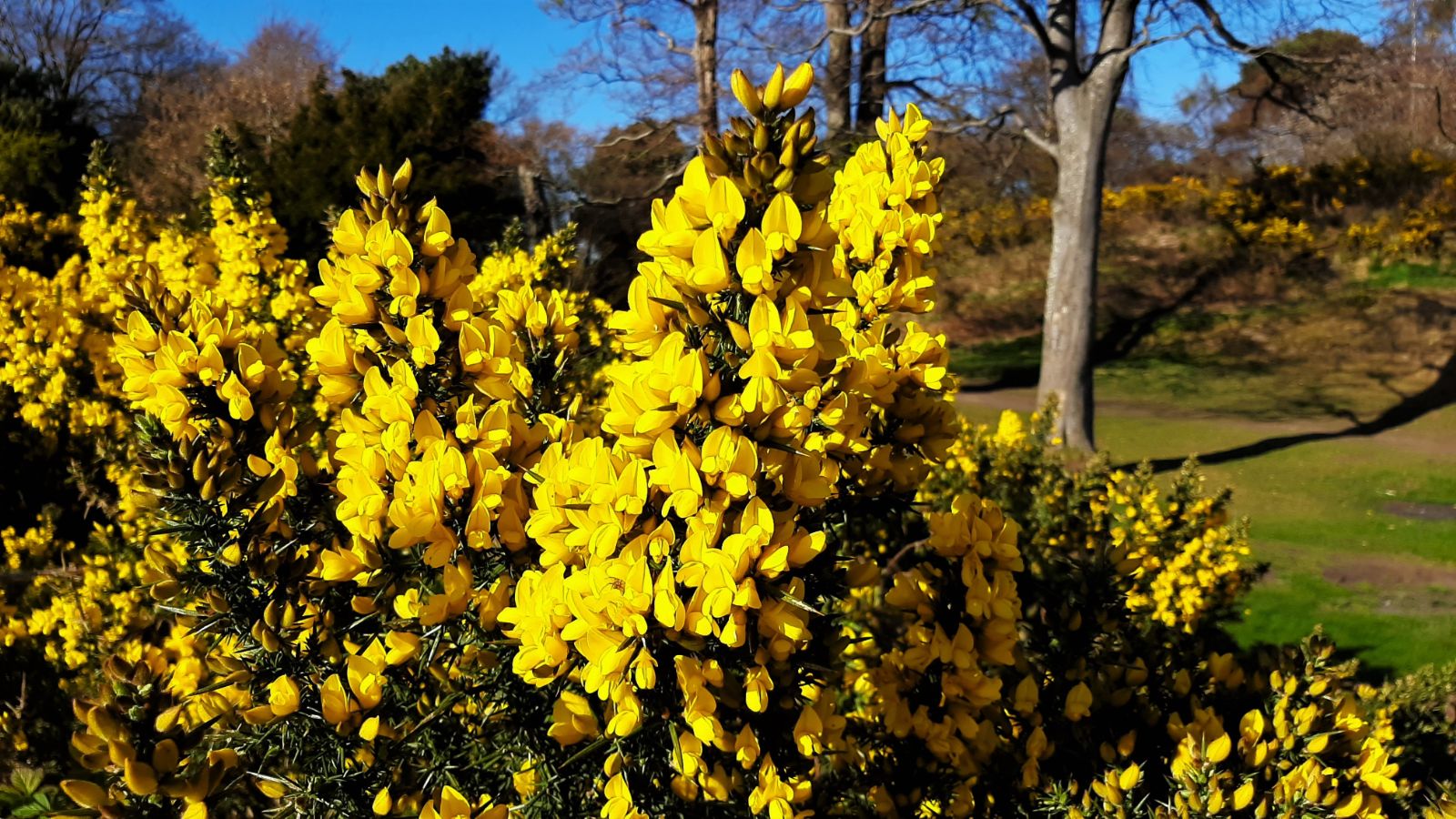Ulex
Sponsor
Kindly sponsored by
a member of the International Dendrology Society
Credits
Julian Sutton (2022)
Recommended citation
Sutton, J. (2022), 'Ulex' from the website Trees and Shrubs Online (treesandshrubsonline.
Family
- Leguminosae
Common Names
- Gorses
About 15 species of very spiny shrubs and subshrubs indigenous to Europe and North Africa, most endemic to the Iberian Peninsula. Branchlets appearing as a branching system of green spines, each – at least when young – with about 8 ridges. Shoots of 2 types, long and short. Long shoots of indeterminate growth, rapidly elongating and not woody in their first season. Short shoots of determinate growth, branched, quickly becoming woody, in the axils of leaves on long shoots; main axis of short shoot described as primary spine, its branches as secondary and thence tertiary spines (see main text for thorough discussion of branching structure). Leaves alternate to opposite, without stipules, reduced to spine- or scale-like phyllodes except in seedlings (rarely leaf-like). Flowers solitary, pedicellate, without nectar, axillary on the main axis of short shoots (sometimes also on their branches), and near the tips of long shoots, usually giving the overall appearance of a racemose or paniculate inflorescence. Each flower with a barely detectable bract at the pedicel base and 2 larger bracteoles inserted with or just below the calyx. Calyx persistent, flattened, divided to the base into two yellowish lips, the upper with 2 teeth, the lower with 3. Corolla persistent, yellow or orange; banner usually longer than wings and keel, entire to emarginate. Stamens 10, their filaments fused to form a tube. Ovary sessile, hairy; style glabrous, arched in the upper third. Fruit a laterally compressed legume, dehiscent by 2 valves, seeds <10. Seeds ovoid to oblong, somewhat flattened, smooth and shiny when ripe, strophiolate. (Cubas 1999; Tutin et al. 1968)
The gorses are spiny, yellow-flowered shrubs with a strong resemblance to one another. They generally succeed best in full sun on poor, well drained soils. At best stunning in flower, their prickliness is inimical to happy gardening, and their horticultural use has been limited.
Ulex belongs to Tribe Genisteae within Subfamily Faboideae of the Fabaceae (Leguminosae), along with important garden genera such as Cytisus, Genista, Laburnum and Lupinus. It is easily distinguished from these by the spiny growth form and yellowish calyx. Molecular evidence supports the idea of Ulex as a natural, monophyletic group (Ainouche et al. 2003). Its closest relatives seem to be Genista and some smaller genera (Echinospartum, Stauracanthus, Retama, plus others more often included in Genista). Relationships within this group need more research, but there is a suggestion that Ulex is closest to Stauracanthus, and nests within a polyphyletic Genista (Cubas, Pardo & Tahiri 2002; Pardo, Cubas & Tahiri 2004). Taxonomic consequences have yet to be worked through.
Of the 15 gorse species we recognize here, all grow naturally in Spain and/or Portugal; most grow nowhere else. A couple extend into North Africa, while four reach further north and east in Europe. It is these four (almost certainly hardier) species which are sometimes grown in our area, and which we cover in detail. They are U. parviflorus (extending only into southern France), U. minor (ranging further north to Britain), its close relative U. gallii which hugs the Atlantic coast north to Scotland and Ireland, and the familiar U. europaeus, which has by far the broadest distribution in Europe, and grows as an invasive alien around the world. There is no up-to-date, published overview of the purely Iberian species in English, so we provide a very brief summary of all species under Ulex Iberian Species. The most comprehensive modern treatment of the genus is in Flora Iberica (Cubas 1999, in Spanish, full text available online).
Gorse identification can be difficult. Size (relative and absolute) of calyx and the various types of petal, patterns of hairiness, and the arrangement of secondary spines on the primaries are useful characters. We provide two keys below, both modified from Cubas (1999), one to the species we treat in full, the other to the entire genus.
Evolution in Ulex seems to have been reticulate, marked not only by divergence but also by hybridization followed by polyploidy, resulting in genetically isolated allopolyploid species. Polyploidy is certainly rife, although hybridization itself seems generally to be rare (Cubas 1999). It is only through the persistence of allopolyploid species that we can infer these past hybridization events. U. minor (diploid), along with the tetraploid and hexaploid forms of U. gallii, apparently form a simple polyploid series without hybridization being involved (Misset & Gourret 1996). Concrete molecular evidence of allopolyploidy seems scarce, though most workers seem to accept that it exists. One highly suggestive molecular study remained unpublished in a peer-reviewed journal at the time of writing (Fonseca et al. 2021). These authors found two major branches in the Ulex tree, one comprising U. minor and U. gallii, the other containing more clearly Mediterranean taxa. There was evidence that typical U. europaeus, a hexaploid, contained three variants of the Ulex genome, two from the Mediterranean clade, one from the northwestern clade. They also presented evidence for allopolyploid origins of U. argenteus, U. densus and U. jussiaei.
Flowers apart, spines dominate our perception of these plants. Almost the entire green, growing, outer part of a gorse bush seems to consist of them. Shoots come in two types, long and short (Cubas 1999). Long shoots extend quickly as soon as they break from buds, and do not become woody in the first year. It is these which go on to form the branched framework of the shrub. Short shoots grow from buds in the axils of leaves on long shoots. They extend much less in their first year, quickly become woody, and tend not persist for many years: they form the bulk of the prickly green ‘foliage’ of most gorses. Spines themselves are branches, not leaves. The main axis of any short shoot, and the tip of a long shoot, are primary spines. They comprise several nodes and internodes, not always easy to see. Primary spines are usually branched; sometimes the branches themselves are branched: these are the secondary and tertiary spines respectively. Being shoots, spines are attached in the axils of leaves. These leaves – known as phyllodes –are very reduced, thin, short, and spiny on most species, and are easy to overlook without a lens. Young seedlings, however, have quite conventional leaves. We cannot be sure whether the spiny habit evolved to deter browsing animals, or to limit water loss in dry environments. Today, it seems to serve both purposes.
Ulex flowers have the distinctive flower structure of legumes (Stokes, Bullock & Watkinson 2003). The 10 stamens are partially fused to form a tube around the style; these sexual organs together make a rather stiff brush enclosed within the two partially fused lower petals (the keel). There are two lateral petals (the wings) and a larger, hooded upper petal (the banner or standard). The calyx is divided into two yellowish lips, and persists into fruit. Bees are assumed to be the main pollinators; this is supported by direct observation in some species (e.g. U. minor, Stokes, Bullock & Watkinson 2003). Bees force their way into fresh flowers as if looking for nectar; the keel petals are pushed apart, knocking the anthers and stigma up against the underside of the pollinator, the impact dusting it with pollen. Once this has happened, the flower appears dishevelled, petals hanging rather limply, and is rarely visited again. Where investigated, gorses have been found more-or-less self-sterile (Atlan et al. 2015; Stokes, Bullock & Watkinson 2003). As in many legumes, seeds are dispersed explosively. Tension generated as the two sides of the fruit slowly dry out relieves itself suddenly as they burst apart, throwing out the seeds. Sitting quietly among gorse bushes on a sunny summer’s day, one can hear small clicks and snaps as pods burst. Where thoroughly studied (in U. minor again – Stokes, Bullock & Watkinson 2003) this carries the seeds a relatively modest distance, ants then taking them further from their parent.
Typical legumes, gorses have root nodules containing nitrogen-fixing symbionts (Allen & Allen 1981), especially valuable on the nutrient-poor soils where they are often found. Stands of U. europaeus are capable of fixing a very significant 200 kg nitrogen per hectare per year (Clements, Peterson & Prasad 2001). Evidence of mycorrhizal associations in Ulex is scant. Little sign of vesicular-arbuscular mycorrhizas was found in either U. gallii or U. minor in heathland (Stokes, Bullock & Watkinson 2003), although experimental inoculation with an arbuscular mycorrhizal fungus improved growth of U. parviflorus (Roldan‐Fajardo 1994).
The widespread U. europaeus has found various economic uses, mostly concerned with fuel, animal fodder or hedging. These are discussed in detail under that species, but perhaps apply to some extent in others.
Gorses have had a long but limited use as ornamentals (Loudon 1844). Bean (1981) recommends them ‘for covering dry sunny banks or breadths of poor gravelly soil, where most shrubs would not thrive. […] All the species have the quality of evergreens, from the dark green of their spines and branches’. Apart from the possibility of clipping them into hedges (see U. europaeus, especially ‘Strictus’), this nicely sums up their garden use. Bean (1981) emphasizes that ‘none of them will thrive in shade, and they are never satisfactory in rich soil; in either case flowers will be sparsely borne, and the plants apt to get lank and ungainly. Where the soil is of good quality it is advisable not to dig it over when planting, with the view of keeping it as hard as possible’. Pruning is possible (if unappealing) after flowering, to maintain compactness (Huxley, Griffiths & Levy 1992). Gorses seem not to suffer from significant pests and diseases. Today, just two cultivars are seen more than rarely in cultivation, the densely, long-flowering U. europaeus ‘Flore Pleno’ and the prostrate U. gallii ‘Mizen Head’.
Seed should be sown singly in small pots or in situ; root disturbance should be avoided. Semi-ripe cuttings kept overwinter in a sandy medium, in a cold frame, should be well rooted by spring (Bean 1981; Huxley, Griffiths & Levy 1992).

